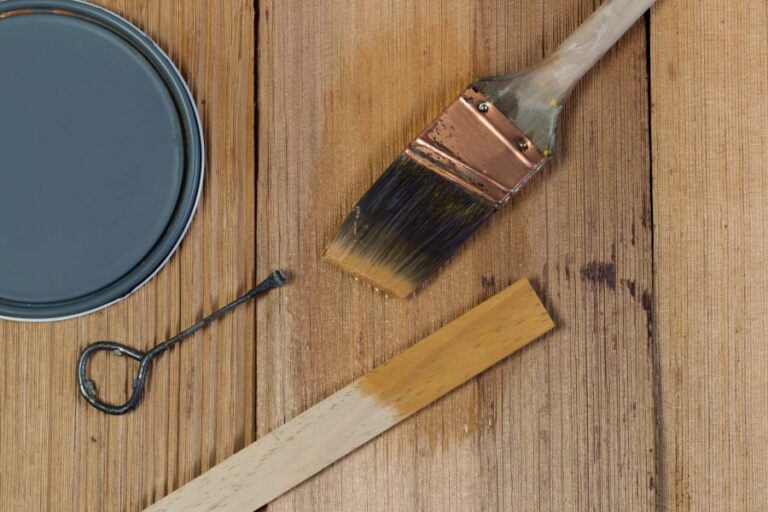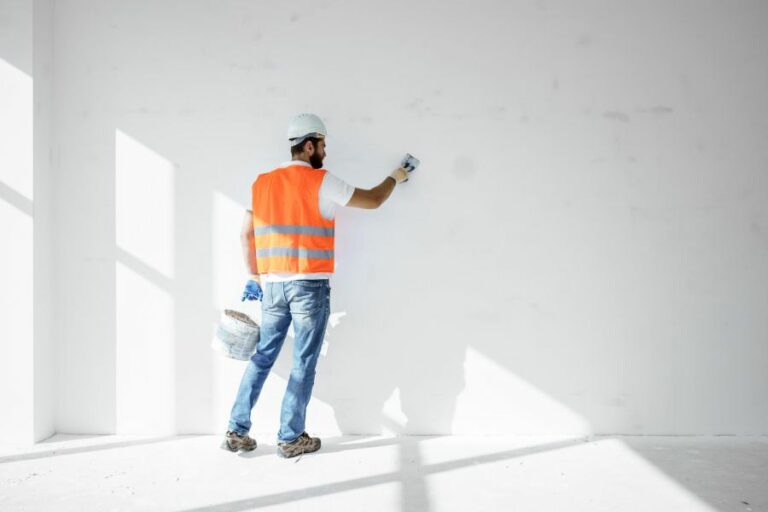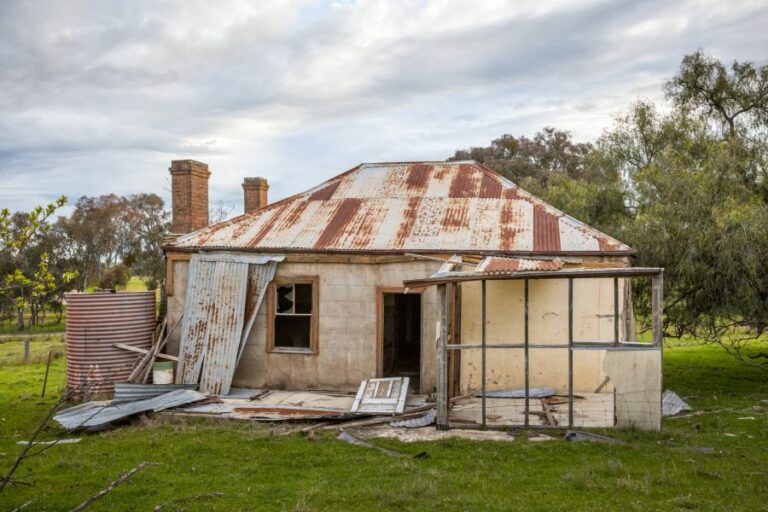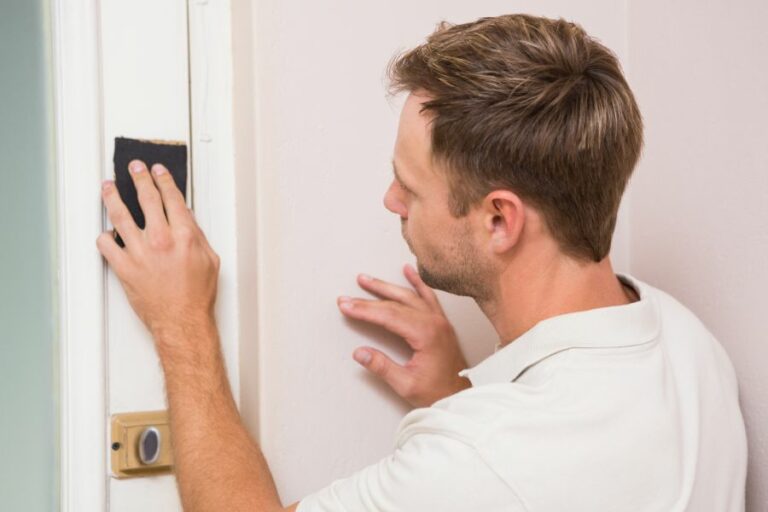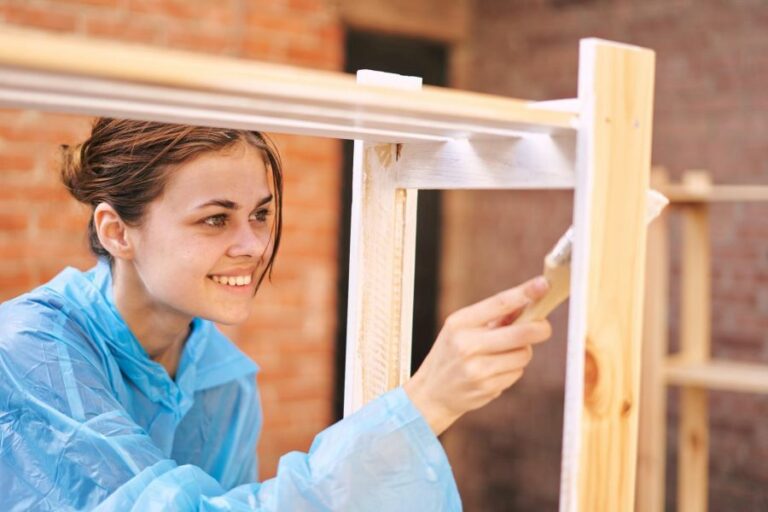How To Select Proper Abrasives For Surface Preparation
Selecting proper abrasives for surface preparation can be complex, but fear not. We’ve got your back! With our in-depth understanding and vast knowledge in the field, we can guide you on the right path.
How to select proper abrasives for surface preparation:
To select proper abrasives for surface preparation, identify the material, assess its surface condition, and determine the desired surface profile. Choose the appropriate type of abrasive (bonded, coated, non-woven, or loose) and grit size based on these factors, and test on sample pieces when necessary to ensure successful coating application.

Looking to achieve the perfect surface finish? Discover the essential factors to consider when selecting the right abrasives for surface preparation. Keep reading for expert tips and recommendations that will have your surfaces shining in no time!
Contents
- 1 Choosing the Right Abrasives for Surface Preparation
- 2 Tips for Picking the Ideal Abrasive
- 3 Top Abrasive Options for Effective Blasting
- 4 Unsuited Surfaces for Abrasive Usage
- 5 Abrasive Cleanliness Standards Explored
Choosing the Right Abrasives for Surface Preparation
Proper surface preparation is the key to a successful coating, and choosing the correct abrasive is essential to this process.
• Understand the Surface Material
First, it is crucial to identify the material that you will be working with. Some common materials include:
- Metal (steel, aluminum, stainless steel)
- Concrete
- Wood
- Plastic
Each material has its specific properties and requires a particular type of abrasive. For instance, steel surfaces require an abrasive that is tough and generates minimal heat to prevent damage, while wood surfaces require less aggressive abrasives to prevent gouging and maintain original/internal patterns.
• Determine Surface Condition and Contaminants
After identifying the material, assess the surface condition and any contaminants that must be removed. Surface conditions can include:
- Rust
- Old paint
- Grease/oil
- Efflorescence (on concrete)
Different surface conditions require distinct abrasive types and potentially pre-treatment. For instance, heavily rusted metal may require a more aggressive abrasive than a lightly corroded surface, while oily surfaces might need degreasing before using any abrasives.
• Evaluate Desired Surface Profile
The desired surface profile is another crucial factor in selecting the correct abrasive. Surface profiles can range from a light etch to a deep profile with exposed aggregate (in concrete). Consider the following when determining the surface profile:
- Coating thickness: Thick coatings may require a more pronounced profile for adequate adhesion
- Type of coating: Some coatings have specific surface profile requirements
- Environment: Aggressive environments, like those with high humidity or exposure to chemicals, may require a more pronounced surface profile for better coating performance
• Consider Types of Abrasives
With material, surface condition, and desired profile determined, consider the different types of abrasives available. These include:
1. Bonded Abrasives
Bonded abrasives are a combination of abrasive grains, filler, and bonding materials. They are commonly used for grinding, cutting, and polishing metal surfaces. Examples include grinding wheels, cutting discs, and mounted points.
Bonded abrasives can be used with various tools like angle grinders, die grinders, and bench grinders.
2. Coated Abrasives
Coated abrasives are abrasive particles affixed to a flexible backing, like paper or cloth. Coated abrasives are used for sanding, polishing, and finishing a wide range of surfaces, including metal, wood, plastic, and concrete.
Examples include sandpaper, sanding belts, sanding discs, and flap discs. Coated abrasives work best with tools like orbital sanders, belt sanders, and random orbital sanders.
3. Non-Woven Abrasives
Non-woven abrasives consist of synthetic fibers impregnated with abrasive grains bound together by resin. They are useful for cleaning, deburring, and light surface preparation without stock removal.
Examples include non-woven pads, non-woven belts, and non-woven discs. Non-woven abrasives can be used with various hand tools or power tools.
4. Loose Abrasives
Loose abrasives are abrasive particles not bonded or coated to a substrate and are typically used in blasting applications.
Common loose abrasives include garnet, steel grit, aluminum oxide, and glass beads. Blasting is used for aggressive surface preparation, like removing rust, old paint, or creating deep surface profiles.
• Evaluate Grit Size
Grit size is a measure of the size of the abrasive particles in the product, and it impacts the surface finish and stock removal rate.
Higher grit numbers indicate finer particles, while lower grit numbers represent coarser particles. Selecting the appropriate grit size depends on the desired surface finish and the rate of stock removal.
When beginning the selection process, start with a coarser grit size to remove contaminants and achieve the desired surface profile, followed by using finer grit sizes to refine the surface before coating.
In some cases, it may be necessary to perform multiple passes with different grit sizes to achieve the desired surface profile and finish.
• Test Abrasives on Sample Pieces (if possible)
If you are unsure about the abrasive product or grit size, it is always advisable to test it on a sample or a small, inconspicuous area of the surface. This will help identify any potential issues or unsatisfactory results before applying the abrasive on a larger scale.
• Conclusion
In conclusion, selecting the proper abrasive for surface preparation is a combination of understanding the material, assessing the surface condition, determining the desired surface profile, and selecting the appropriate type and grit size of the abrasive.
It is important to take the time to evaluate these factors and test abrasives when necessary to ensure that your surface preparation leads to a successful coating application.
Step | Description |
|---|---|
1 | Identify the type of surface material and its condition (e.g., steel, concrete, wood, etc.). |
2 | Assess the desired level of surface cleanliness and required profile depth (e.g., SSPC, NACE, or ISO standards). |
3 | Consider the environmental and safety regulations related to blasting media (e.g., silica exposure, chemical residue). |
4 | Choose an appropriate type of abrasive based on the surface material, desired cleanliness, and environment (e.g., steel grit or shot, aluminum oxide, garnet, glass beads, etc.). |
5 | Select the abrasive size, hardness, and shape to achieve the required surface profile depth without damaging the underlying substrate. |
6 | Test the chosen abrasive on a small, inconspicuous area of the surface to evaluate its efficiency, consumption rate, and whether it achieves the desired results. |
7 | Adjust the blasting equipment settings (e.g., pressure, nozzle size) to optimize the abrasive consumption rate and surface preparation efficiency. |
8 | Monitor and maintain proper abrasive recycling and waste management practices to ensure safety, cost-effectiveness, and environmental compliance. |
Tips for Picking the Ideal Abrasive
Choosing the right abrasive is crucial for the success of any project that requires sanding, grinding, or finishing.
To make an informed decision, it’s important to understand the various types of abrasives available, their applications, and factors to consider before making a purchase.
• Understanding Abrasive Types
There are several types of abrasives, each with its unique properties and applications. Some common types include:
– Coated Abrasives
Coated abrasives consist of abrasive grains bonded to a flexible substrate, such as paper or cloth, with a resin or glue. Common examples include sandpaper, discs, and belts. Coated abrasives are widely used in woodworking, metalworking, and finishing tasks.
– Bonded Abrasives
Bonded abrasives have abrasive grains held together by a bonding material, forming a solid shape like a wheel or a stone. They are used for grinding, cutting, and finishing tasks on materials such as metal, ceramics, and concrete. Grinding wheels and cut-off wheels are common examples of bonded abrasives.
– Non-woven Abrasives
Non-woven abrasives use nylon fibers combined with abrasive grains and a bonding agent, forming an open web structure.
They are flexible and offer a consistent finish. Non-woven abrasives are primarily used for cleaning, finishing, and polishing, particularly on metal surfaces. Examples include abrasive pads, hand pads, and surface conditioning discs.
– Superabrasives
Superabrasives are made from industrial-grade diamonds or cubic boron nitride (CBN) grains embedded in a bonding material.
They offer high hardness and durability, making them suitable for cutting and grinding hard materials, such as stone, glass, ceramics, and hard metals. Diamond cutting discs and CBN grinding wheels are examples of superabrasives.
• Factors to Consider When Choosing Abrasives
Now that we’re familiar with the types of abrasives, let’s explore the factors to consider when selecting the right one for your project.
– Material
The material being processed plays a crucial role in choosing the appropriate abrasive. For example, wood surfaces require coated abrasives like sandpaper, while metal and concrete surfaces may require bonded or non-woven abrasives for grinding and finishing tasks.
– Grit Size
Grit size refers to the size of the individual abrasive grains, and it directly impacts the final surface finish. A lower grit number indicates larger grains and a more aggressive removal rate, while a higher grit number corresponds to smaller grains and a finer finish.
When selecting an abrasive, start with a coarse grit for heavy material removal and progressively work your way towards finer grits to achieve a smooth finish.
– Hardness
The hardness of the abrasive should be greater than the material being processed to ensure effective material removal. For example, when working with hard materials like stone or ceramics, superabrasives such as diamond or CBN abrasives will yield the best results.
– Bond Strength
The bond strength determines how easily the abrasive grains will detach from the bonding material. A stronger bond is suitable for aggressive material removal and long-lasting performance, while a weaker bond allows for a faster grain shedding rate, resulting in a smoother finish.
The bond strength of coated abrasives is typically indicated by a letter grade ranging from E (soft) to Z (hard).
• Practical Tips for Choosing Abrasives
Here are some recommendations to help you choose the right abrasive for your project:
- Assess your project requirements. Identify the material type, desired surface finish, and the amount of material removal needed to determine the appropriate abrasive type, grit size, hardness, and bond strength.
- Test different abrasives. It’s helpful to test a few abrasive products on a small area of the material to gauge their effectiveness and evaluate the finish quality.
- Consider using a combination of abrasives. For projects requiring multiple stages of material removal and finishing, consider using a combination of abrasive types and grit sizes for optimal results.
- Factor in the tool compatibility. Ensure the abrasive you choose is compatible with the tool you plan to use, whether it’s a hand tool, power tool, or a machine.
- Buy from a reputable supplier. Purchase your abrasives from a trusted supplier to ensure product quality, durability, and safety.
By implementing these practical tips and considering the factors discussed in this article, you will be better equipped to choose the right abrasive for your next project.
Top Abrasive Options for Effective Blasting
• Understanding Abrasive Blasting
Abrasive blasting, also known as sandblasting, is a process that involves propelling abrasive material onto a surface in order to clean or etch it.
This technique is commonly used in a variety of applications, including cleaning rust and corrosion from metal surfaces or preparing surfaces for painting.
Choosing the right abrasive for a blasting project is essential for achieving optimal results while minimizing the risk of damage to the surface.
• Types of Abrasives for Blasting
There are several different types of abrasives commonly used in blasting projects. Some of the most popular options include:
– Steel Shot and Grit
Steel shot and grit are both popular choices for heavy-duty blasting projects involving metal surfaces. They are extremely hard and durable, making them suitable for removing thick layers of rust, paint, or other contaminants. They can also help to create a smooth, clean finish on metal surfaces.
– Glass Beads
Glass beads are versatile abrasives that can be used for a variety of applications, including cleaning, deburring, and peening.
They are particularly popular for use on delicate or sensitive surfaces, as they are less aggressive than other abrasives and can effectively remove contaminants without causing damage.
– Aluminum Oxide
Aluminum oxide is a very hard and sharp abrasive, making it an excellent choice for etching and profiling applications. It is often used on harder surfaces, such as metal alloys and glass, and can also be used for general-purpose blasting projects.
– Garnet
Garnet is a popular natural abrasive that is both hard and sharp, providing an effective and efficient abrasive for blasting. It is ideal for use on non-ferrous metals, fiberglass, and aluminum and is especially useful in waterjet cutting applications.
– Silicon Carbide
Silicon carbide is an extremely hard and sharp abrasive, making it a popular choice for aggressive blasting projects. It is particularly well-suited for use on hard surfaces, such as stone, ceramics, and glass, and can also be used for etching applications.
– Plastic Media
Plastic media is a softer abrasive that is suitable for use on delicate surfaces, such as automotive parts or aerospace components, where potential damage to the underlying material must be avoided. It is often used to remove paint, coatings, or corrosion without impacting the base material.
• Factors to Consider When Choosing an Abrasive
When choosing an abrasive for a particular blasting project, there are several factors to consider. Some of the key factors include:
– Material Type
The type of material being blasted is an important factor to consider, as certain abrasives may be better suited for specific materials. For example, steel shot and grit work well for heavy-duty projects involving metal surfaces, while glass beads or plastic media may be better options for delicate surfaces.
– Desired Finish
The desired finish of the blasted surface should also be taken into account when choosing an abrasive.
A smoother finish may require the use of a less aggressive abrasive, such as glass beads, while a more textured or etched finish may benefit from a more aggressive option, like aluminum oxide or silicon carbide.
– Cost and Availability
The cost and availability of the selected abrasive must be considered, particularly for large-scale or ongoing blasting projects. Some abrasives, like garnet or aluminum oxide, may be more expensive than others but offer specific benefits that make them a worthwhile investment.
– Environmental Impact
When selecting an abrasive for a blasting project, it’s important to consider the potential environmental impact. Some abrasives may pose environmental risks, such as potential harm to aquatic ecosystems or the generation of airborne particulates that can impact air quality.
Abrasives derived from natural materials, like garnet or glass beads, maybe more environmentally friendly options.
• Expert Recommendations
Based on extensive experience in the field, I recommend considering the following abrasives for different blasting applications:
- For heavy-duty metal blasting projects, steel shot or grit is an excellent choice.
- For delicate surfaces that require a less aggressive abrasive, glass beads or plastic media are ideal.
- For achieving an etched or textured finish on harder materials, aluminum oxide or silicon carbide are recommended.
• Conclusion
Choosing the right abrasive for a blasting project is crucial to achieving optimal results while minimizing the risk of damage to the surface.
By considering the material type, desired finish, cost, availability, and environmental impact of various abrasives, professionals can select the best option for their specific application.
By utilizing expert recommendations and reliable resources, such as NACE, individuals can make informed decisions and achieve successful abrasive blasting results.
Abrasive Material | Advantages | Disadvantages |
|---|---|---|
Garnet | Highly effective, low dust, recyclable, versatile | Higher cost compared to slag abrasives |
Aluminum Oxide | Extremely hard, efficient cutting, reusable | Expensive, not suitable for softer materials due to surface damage |
Glass Beads | Environmentally friendly, cleans without damaging, good for peening | Lower cutting speed, breaks down more quickly |
Steel Shot & Grit | Highly recyclable, aggressive cleaning, good for peening | Higher equipment maintenance, not suitable for softer substrates |
Silicon Carbide | Very hard and sharp, fastest cutting, highly recyclable | One of the most expensive abrasives, potential health and safety concerns |
Unsuited Surfaces for Abrasive Usage
Abrasives are materials used to wear down, smooth, or polish surfaces through friction. They come in various forms, such as sandpaper, steel wool, and scouring pads.
While abrasives are incredibly useful for various applications, it is crucial to understand that they should not be used on certain surfaces. Using abrasives inappropriately can cause irreversible damage to delicate surfaces.
• Delicate Electronic Screens
Modern electronic devices such as smartphones, tablets, and TV screens have delicate surfaces that are easily scratched.
Abrasive materials should not be used on these surfaces, as they can cause irreparable damage. Instead, opt for microfiber cloths and gentle screen cleaners designed specifically for these devices.
• Soft Metals
Certain metals, such as copper, brass, aluminum, and gold, are softer than others and can be easily scratched or damaged by abrasive materials.
When cleaning these metals, it is essential to use non-abrasive solutions like specialized metal cleaners and soft cloths. For tougher stains or tarnish, you may soak the items in a cleaning solution before gently wiping them clean.
• Hardwood Floors
While maintaining the natural beauty of hardwood floors is essential, using abrasives to clean them can cause irreparable damage to their surface.
Abrasives can scratch the protective finish and expose the wood to water and other elements, leading to warping or discoloration. Instead, clean the floors with a damp mop and use a hardwood floor-specific cleaner.
• Glass and Mirrors
Glass surfaces and mirrors can easily scratch or become cloudy if cleaned with abrasive materials. Rather than risking damage, use a glass cleaner and a soft, lint-free cloth to clean these surfaces. If necessary, clean stubborn stains or spots with a non-abrasive sponge or cloth.
• Painted Surfaces
Abrasive materials can remove paint from surfaces, making it essential to avoid using them on painted walls, furniture, or objects. For cleaning purposes, rely on gentle solutions like water and mild detergent.
For more stubborn stains, you may use a soft sponge or cloth dampened with warm, soapy water. Make sure to thoroughly rinse the area with clean water and gently pat it dry.
• Stone Surfaces
Natural stone surfaces, such as marble, granite, and limestone, can be damaged or stained when abrasive materials are used. For these surfaces, use stone-specific cleaning products on a soft cloth or sponge to prevent etching or scratching.
If necessary, clean heavier stains with a non-abrasive cleaning pad and a gentle pH-neutral cleaner, then rinse and dry the surface.
• Leather and Vinyl
Leather and vinyl surfaces, such as furniture or car interiors, can be damaged by abrasive materials. To maintain the appearance and durability of these surfaces, avoid using abrasives and instead, use specialized leather or vinyl cleaners with soft, lint-free cloths.
• Avoiding Damaging Surfaces: Tips and Tricks
Now that you are aware of what surfaces to avoid using abrasives on, keep the following recommendations in mind for maintaining these surfaces:
- Read cleaning product labels carefully to ensure they are suitable for the surface you intend to clean
- Test a small, inconspicuous area of the surface when trying a new cleaning method
- Use the gentlest cleaning method possible to avoid causing damage
- Always follow the manufacturer’s recommendations for cleaning and maintenance.
In summary, while abrasives can be useful for many applications, they should not be used on delicate surfaces such as electronic screens, soft metals, hardwood floors, glass, mirrors, painted surfaces, stone surfaces, or leather and vinyl materials.
Employ alternative, non-abrasive cleaning methods to protect and maintain these surfaces effectively.
Abrasive Cleanliness Standards Explored
Abrasive cleanliness is a crucial aspect in several industries, especially those involving surface preparation and coating applications such as automotive, aerospace, marine, and manufacturing. Maintaining high standards in abrasive cleanliness is necessary to ensure the longevity and quality of these applications.
• Importance of Abrasive Cleanliness in Surface Preparation
When it comes to surface preparation and coating applications, achieving an appropriate level of cleanliness is crucial to ensure proper adhesion of the coating, avoid premature failure, and prevent downtime and costly repairs.
The presence of contaminants on the abrasive material can cause several problems, such as:
- Coating adhesion issues: If contaminants are not removed, they can interfere with the coating’s ability to bond with the substrate, resulting in reduced adhesion and early failure of the coating.
- Surface defects: Contaminants can cause surface defects like pits, roughness, and blisters, which can compromise the overall appearance and quality of the final product.
- Corrosion: The presence of soluble salts on the abrasive can accelerate the corrosion process, leading to a shorter service life for the protected structure or component.
Considering these implications, it becomes apparent why maintaining high standards for abrasive cleanliness is critical in various industries.
• Key Standards for Abrasive Cleanliness
Several organizations such as ISO, ASTM, and NACE have developed standards that provide specifications, requirements, and testing methods to evaluate and maintain abrasive cleanliness. Some of the widely recognized standards include:
– ISO 11124 and ISO 11126
ISO 11124 series (11124-1 to 11124-4) provides general classification requirements, sampling, and test methods for metallic blast-cleaning abrasives such as steel shot and grit, while the ISO 11126 series (11126-1 to 11126-10) covers non-metallic abrasives like natural minerals and synthetic materials.
– ASTM Standards
Several ASTM standards address the cleanliness and quality of abrasives, some of which are:
- ASTM D4940: This standard provides a test method for conductivity measurement of aqueous solutions of water-soluble salts used in cleaning surfaces.
- ASTM D7127: The standard outlines a test method for evaluating the quality and cleanliness of recycled or reclaimed abrasives by determining the levels of total water-soluble contaminants.
– NACE Standards
NACE also provides a set of standards related to abrasive cleanliness:
- NACE No. 1: This standard, also known as SSPC-SP 5, addresses the highest level of cleanliness for steel surfaces achieved by abrasive blast cleaning, which is referred to as a White Metal Blast Cleaning.
- NACE RP-0297: This recommended practice provides guidance for assessing the cleanliness of abrasive blast cleaning operations by conducting tests for oil and water-soluble contaminants.
These standards and practices are widely recognized and adopted as benchmarks for maintaining abrasive cleanliness levels in the surface preparation and coating industry.
• Tips for Maintaining Abrasive Cleanliness
To ensure that abrasive operations meet the industry standards for cleanliness, it is essential to follow a set of best practices. Some recommendations include:
- Select appropriate abrasive materials: Evaluate and choose abrasives based on their intended use and compatibility with the substrate material, coating specifications, and required degree of cleanliness.
- Control pre-cleaning contaminants: Manage potential sources of contaminants, such as dust, grease, and soluble salts, by storing and handling abrasives in clean, dry, and well-ventilated areas.
- Inspect and test abrasives: Regularly inspect and test abrasives against the relevant standards to ensure their cleanliness and monitor their degradation over time.
- Employ proper cleaning techniques: Follow correct abrasive blasting techniques and equipment settings to achieve the desired level of cleanliness efficiently.
- Implement quality control processes: Establish regular inspection and monitoring of the abrasive blast cleaning process, including record-keeping and routine equipment maintenance, to ensure adherence to industry standards and specifications.
• Final Thoughts
Maintaining high standards of abrasive cleanliness is essential in various industries to ensure the long-term performance and quality of surface preparation and coating applications.
Familiarizing oneself with key standards and best practices can help professionals in the field achieve and maintain the required levels of abrasive cleanliness, leading to enhanced product quality and reduced costs associated with premature failure and rework.

